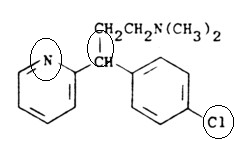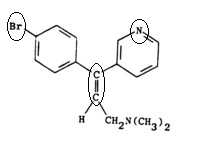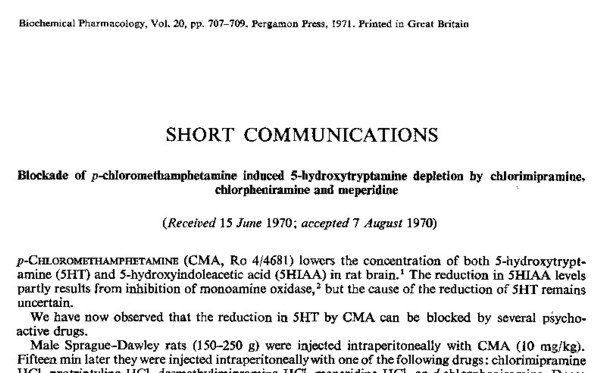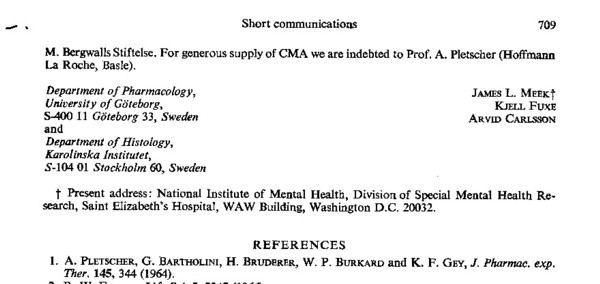
Jim Meek
A Drug Discovery Narrative
A short paper that I published many years ago as a post-doctoral fellow was remarkably worthwhile:
The paper describes how several common drugs are able to block the depletion of serotonin in the brains of rats that is caused by a neurotoxin, p-chloroamphetamine.
The first antidepressants used clinically were all known to affect the catecholamines (norepinephrine, epinephrine and dopamine). The tricyclics (like imipramine and desipramamine) blocked 'reuptake'; the monoamine oxidase inhibitors blocked amine metabolism. It was NOT believed that altering the function of the other widely distributed biogenic amine (serotonin) might be therapeutically useful. In Carlsson's lab in Gothenburg, we had shown that the tricyclic chlorimipramine did affect serotonin (presumably by altering uptake) but had little or no effect on norepinephrine.
The mechanism of action of p-choramphetamine was unknown, but Carlsson hypothesized that it might require uptake into serotonergic neurons. So, after finding that chlorimpramine blocked this toxicity, I checked the ability of unrelated compounds to have the same effect. I had looked up structures in the Merck Index of compounds from the department's drug cabinet, and selected some for testing based on chemical intuition. One of the compounds, chlorpheniramine

is a commonly used antihistamine. Dr. Carlsson was then a scientific
adviser to the Hässle Laboratories (now a part of AstraZeneca). After
creating a series of analogs of chlorpheniramine at Hässle , one was
chosen with three modifications (circled) that became Zimelidine.

This compound was the first serotonin-selective antidepressant, and was used in 200,000 people before being withdrawn due to toxicity. The development of Zimelidine is described (in Swedish) in "Från örtavkok ...till läkemedel" by Ivan Östholm, Apotekarsocietens förlag, Stockholm, 1991
Ray Fuller, the late director of research at Eli Lilly, said that technique described in the paper was used to show that Lilly 110140, later known as Prozac would block the serotonin uptake pump in animals. The compound had previously been used in test-tube experiments.
Biochemical Pharmacology 20, 707, 1971 
